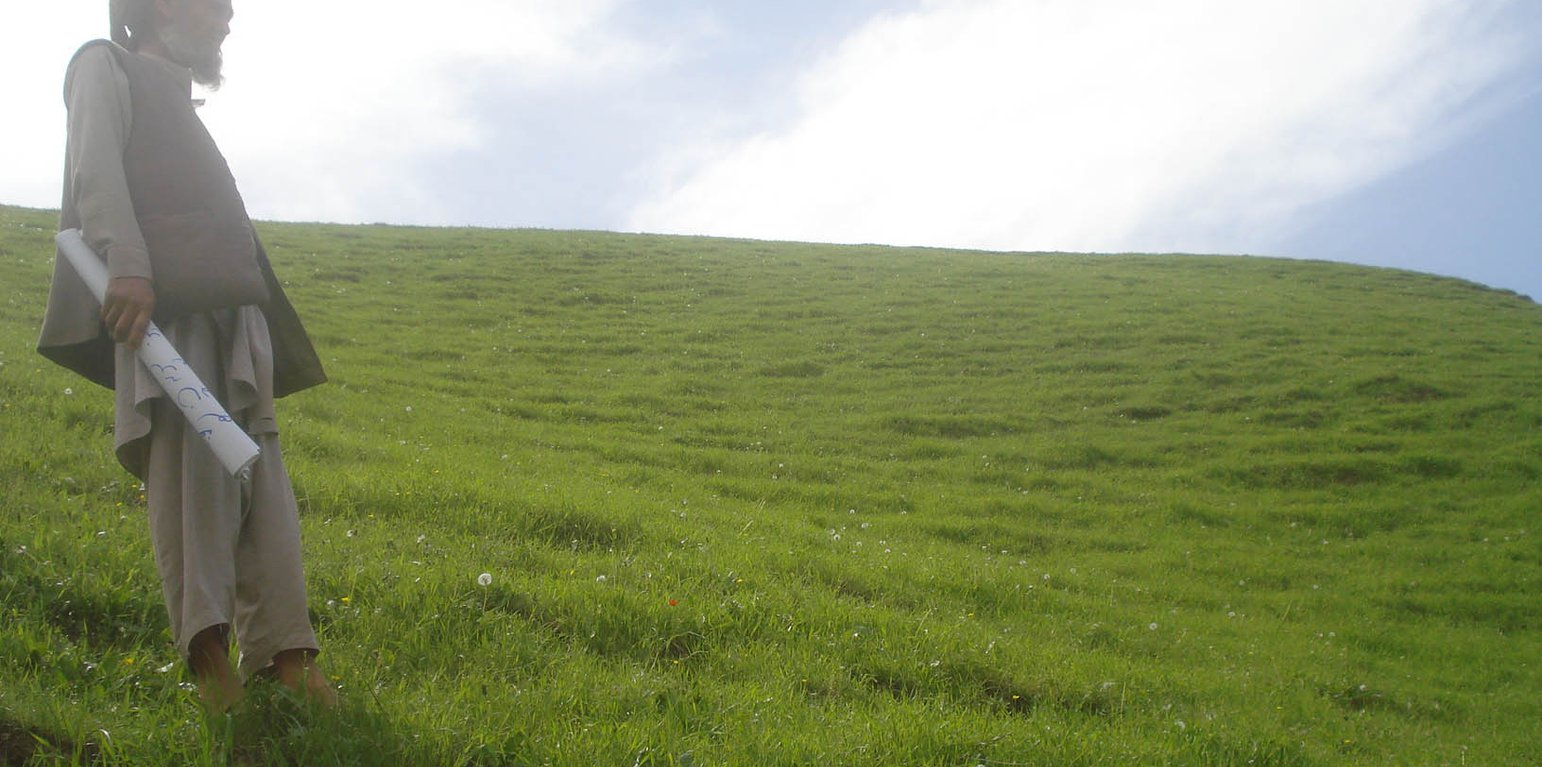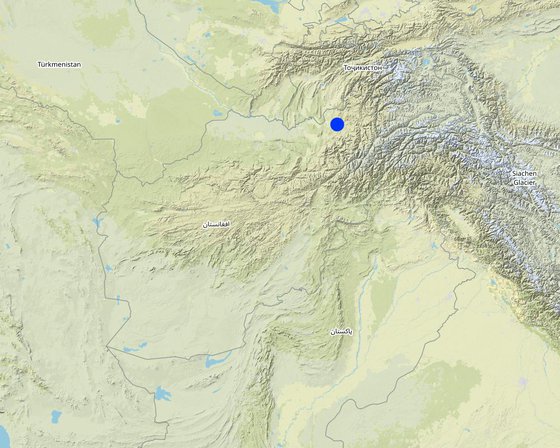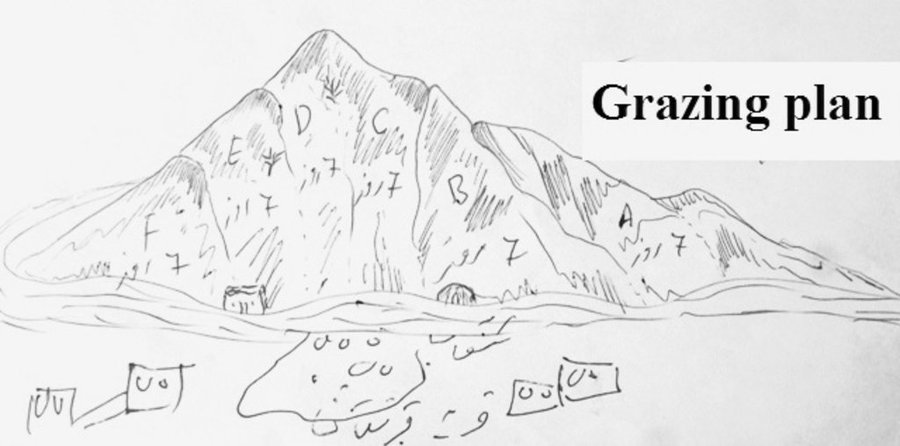



Livestock keeping is one of the key livelihood strategies in rural Rustaq, in addition to cultivation of cereals. Families rely on their livestock not only for consumption of meat from cattle, goats and sheep, and dairy products such as milk and sour milk, but also as means of transportation (donkeys), labour in agriculture (oxen, donkeys) and as a source of income through sales. Naturally, every family strives to increase their household’s livestock as much as they can, which increases the pressure on the local pastures - leading to extensive overgrazing. The pastures in Jawaz Khana and Sari Joy are characterized by poor vegetation cover, low carrying capacity and severe erosion with deep rills clearly visible. Heavy rains in spring and autumn wash off the topsoil on pastures, resulting in heavy erosion, landslides and gully formation. These severely degraded pastures continue to be used though "open access" - without any management schemes or regulations in place. Some pastures that are not suitable for grazing have been converted to arable lands and tree plantations. The quantity and quality of livestock fodder is insufficient for all the livestock, and this affects animal health.
Plans for rotational grazing were prepared for the communities in Sari Joy and Jawaz Khana to organize the use of local pastures and prevent their further degradation. Rotational grazing plans regulate the frequency and intensity of livestock grazing on the pastures. The area is seeded with alfalfa to improve the fodder stock and enhance the quality of the pasture. For up to three years the seeded area is closed to grazing, during which period the community is provided with stocks of hay and straw to feed their livestock as an alternative. After the end of the closure period, the grazing area is divided into 6-7 sections (paddocks) depending on the area of the pasture. The livestock graze the first paddock for 7 days and move to the next paddock. Each paddock is grazed for the period of 7 days during April and May. From the month of May the grazing area is closed for resting. The livestock move to the summer pastures for the rest of the summer months.
The community is key in preparing the grazing plans and identifying the pastures where these plans will be applied, as well as the conditions which are part of it, such as the frequency of the grazing period. Frequent meetings need to be held with the community livestock holders to explain the purpose of the rotational grazing and how it can be beneficial in pasture improvement. The Natural Resources Management Committee and the technical staff of the Livelihood Improvement Project (LIPT) are in charge of engaging the local pasture users to meet their needs and consider their views accordingly.
The actual implementation of the rotational grazing plans is difficult to assess for the time being. The grazing area is not fully restored and the fodder stock remains low. Many land users do not fully understand the concept behind the rotational grazing plans or their purpose. In an area where there is a severe shortage of livestock fodder and very limited grazing land, accepting and following these plans will require more time and additional support in terms of awareness-raising and support feeding of the livestock during the exclusion period. The villagers have some doubts about the costs and benefits of grazing and rotation. They have no full understanding of the benefits of the rotational grazing for their household and are likely to be not ready to adhere to such schemes.
Women are part of the livestock management system, and are in charge of feeding and taking care of the livestock. However, they are not aware about the plans for rotational grazing in their village and how are these plans are applied in practice.

地点: Sari Joy and Jawaz Khana Villages, Takhar Province, Rustaq District, 阿富汗
分析的技术场所数量: 2-10个场所
技术传播: 均匀地分布在一个区域 (approx. 0.1-1 平方千米)
实施日期: 2015; 不到10年前(最近)
介绍类型







技术规范
作者:LIPT
After the end of the exclusion period the grazing area is divided into 6-7 sections (paddocks) depending on the area of the pasture. The livestock graze the first paddock for 7 days and move to the next paddock after 7 days. Each paddock is grazed for the period of 7 days during April and May. From the month of May the grazing area is closed for resting. The livestock move to the summer pastures for the rest of the summer months.
|
|||||||||||
| 对投入进行具体说明 | 单位 | 数量 | 单位成本 (美元) | 每项投入的总成本 (美元) | 土地使用者承担的成本% |
| 劳动力 | |||||
| Leveling the land with a rake | person-day | 150.0 | 5.3 | 795.0 | 71.0 |
| Sowing alfalfa | person-day | 5.0 | 5.3 | 26.5 | 71.0 |
| Preparation of grazing plan | person-day | 2.0 | 9.0 | 18.0 | |
| Protection of the site | year | 1.0 | 447.0 | 447.0 | 100.0 |
| 设备 | |||||
| Shovel | piece | 1.0 | 3.8 | 3.8 | 100.0 |
| Rope | Meter | 50.0 | 0.15 | 7.5 | 100.0 |
| Rake | piece | 1.0 | 3.0 | 3.0 | 100.0 |
| 植物材料 | |||||
| Alfalfa seed | kg | 17.5 | 0.42 | 7.35 | |
| 肥料和杀菌剂 | |||||
| DAP | kg | 125.0 | 0.9 | 112.5 | |
| Urea | kg | 125.0 | 0.45 | 56.25 | |
| 技术建立所需总成本 | 1'476.9 | ||||
| 对投入进行具体说明 | 单位 | 数量 | 单位成本 (美元) | 每项投入的总成本 (美元) | 土地使用者承担的成本% |
| 劳动力 | |||||
| Reseeding alfalfa | person day | 5.0 | 5.3 | 26.5 | 100.0 |
| Protection during exclusion | year | 2.0 | 447.0 | 894.0 | 100.0 |
| 植物材料 | |||||
| Alfalfa seed | kg | 17.5 | 0.42 | 7.35 | 100.0 |
| 技术维护所需总成本 | 927.85 | ||||